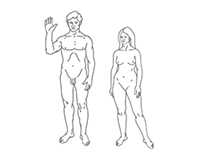Easter eggs are hidden messages, in-jokes or features in things like video games, web sites, DVDs and other media. For example, the HP 54622D, a professional oscilloscope, has an ‘Asteroids’ clone called ‘Rocks’ that can be accessed by entering a secret sequence of buttons. Google Maps contains an easter egg whereby a user asking for directions from Japan to China would be directed to jetski across the Pacific Ocean.
They draws their name from the custom of the Easter egg hunt observed in many Western nations as well as the last Russian imperial family’s tradition of giving elaborately jeweled egg-shaped creations by Carl Fabergé which contained hidden surprises.
The practice is similar in some respects to hidden signature motifs such as Diego Rivera including himself in his murals, Alfred Hitchcock’s legendary cameo appearances, various ‘Hidden Mickeys’ that can be found throughout the Disney Parks, and caricaturist Al Hirschfeld’s habit of hiding his daughter, Nina’s name in his artwork. Another possible origin for the term comes from the film,
The Rocky Horror Picture Show. Filmed in 1975, the crew had an actual Easter egg hunt one day on the set and seem to have missed some of the eggs. As a result, there are three confirmed scenes where an actual Easter egg can be seen.
The opposite of an Easter egg is a logic bomb, a piece of code intentionally inserted into a software system that will set off a malicious function when specified conditions are met. For example, a programmer may hide a piece of code that starts deleting files should they ever be terminated from the company.
The Daily Omnivore
Everything is Interesting



Leave a comment